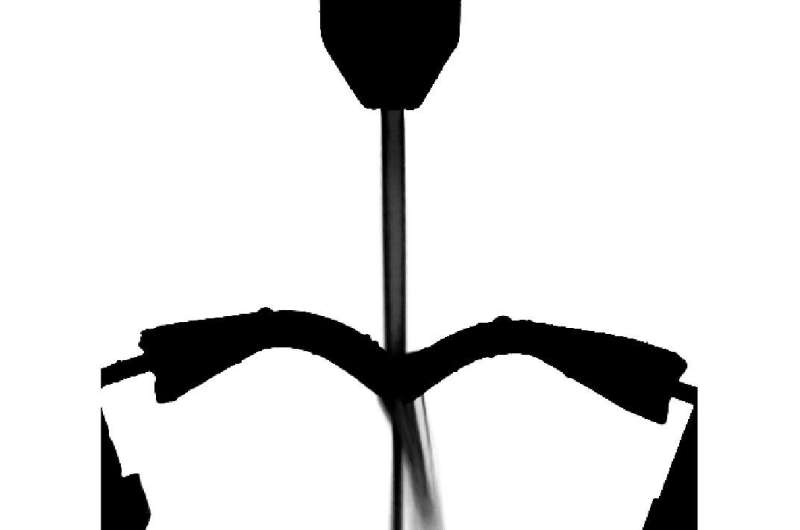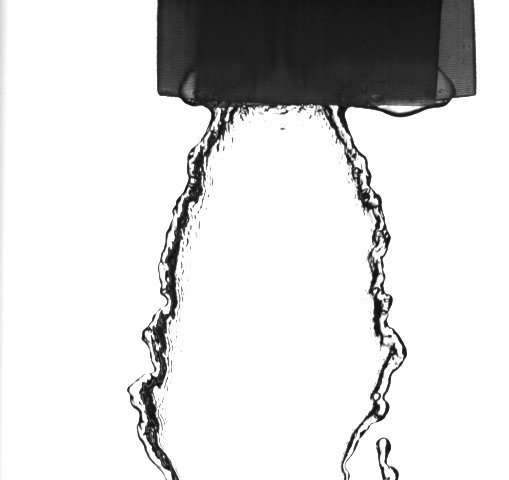Researchers propose solutions for urine sample splash dilemma

Urinating into a cup may be a medical necessity for monitoring the health of the kidney and other issues, but it's often uncomfortable, embarrassing and messy—especially for women. But what if there were a way to comfortably provide a sample without the splashback?
Tadd Truscott, associate professor at the Splash Lab at Utah State University, created a set of experiments using an anatomically correct female urethra that produced a jet of water with a pressure and flow equivalent to what a human bladder produces. He and his colleagues did this to examine its interaction with a soft polymer similar to the female labia. Inspired by the findings and her own work with disabled persons, Faith Leibman applied the knowledge to her recently released patented product called the Orchid. Leibman's Orchid is a funnel-like catch attached to a urine sample cup. Its design makes it easier for women and people with disabilities to provide a urine sample.
During the American Physical Society's Division of Fluid Dynamics 71st Annual Meeting, which will take place Nov. 18-20 in Atlanta, Georgia, Josh Wille, a member of Truscott's team, will describe the findings and their potential implications, especially when trying to "aim for the cup."
Understanding the interactions between fluids and soft structures could improve the overall experience of providing urine samples.

"While many studies have looked at how the jet infringes on a surface, few have considered the exit of fluid," explained Truscott. "Even fewer studies have looked at women and urination."
The intent of the experiment is to characterize the behavior between the jet and a soft polymer. "It was challenging to simulate the interaction between the urine stream and the simulated labia, as this external feature varies greatly between women," said Truscott.
Truscott found that as the simulated labia was pushed further into the stream, the urine became a liquid sheet. The finite length of the polymer caused small jets and droplets to form at either end, which created an even wider stream of liquid.
"It was not surprising to find that the further the simulated labia was pushed into the jet, the more mess it made. On the other hand, we thought the Coanda effect would play a bigger role, but the jet flow only attached itself to the simulated labia when it was pushed less than one quarter of the way through," said Truscott. The Coanda effect is the phenomenon where a jet of fluid follows the curvature of a surface like when a back side of a spoon is placed in the flow of the kitchen faucet and diverts the flow.
This research could have wider implications beyond the Orchid device, according to Truscott. "We could look at changing the overall design of things like clothing and toilets to make urinating less messy for both men and women. The research could also be applied to devices that assist women in urinating while standing up, something that could be particularly useful to women in the military."
More information: Presentation E05.6, "Urine sample splash back" by Josh R. Wille, Faith Leibman, Nathan B. Speirs and Tadd T. Truscott, will be Sunday, Nov. 18, 6:15 p.m. in Room B207 of the Georgia World Congress Center in Atlanta. Abstract: meetings.aps.org/Meeting/DFD18/Session/E05.6
Provided by American Physical Society



















